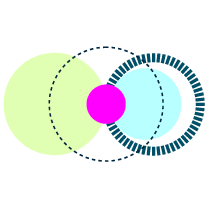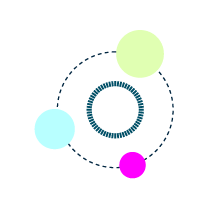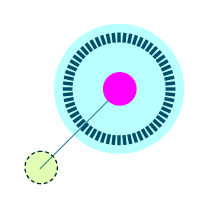Gather: From feedback to feelings

Gather: From feedback to feelings
How to elevate your CX program
Contents
Introduction
- What if you did it better?
- What if you could get the
qualitative data you deserve? - What if you could see the
whole human?
1. Uncover the hidden human with qualitative discussions and online communities
1.1 There’s two (or more) sides to every story
1.2 The five easy steps for using qualitative research
1.3 Dig down, dig deep, and find feedback
2. Connect the customer journey dots with digital diaries and journey mapping
2.1 The devil’s in the details: Grab in the moment insights and fill the gaps
2.2 The five easy steps for using digital diaries and journey mapping
Don’t take feedback at face value
When times are tough, you need to do more with less. But understanding your customers on a rich, human level is the key to making the right decisions at the right time. So how can you get those insights without losing sight of the bigger economic picture? We show you two approaches to obtaining customer insight and understanding the whole customer journey, all without extravagant expenditure and risky strategy.
In today’s tough times, doing more with less is a constant struggle. You’re asked to slash costs, consolidate programs, and protect projects. Budgets retrench and program scope shrinks.
But understanding your customers on a rich, human level is the key to unlock greater efficiency, smoother growth, and more revenue, without spending more.
So, what does make your customers tick? What do they want? What do they do? Why? Essentially, what makes them human?
This insight into your customer as a human can’t be found in limited answers to uninspired surveys. Or in surface-level metrics that mean less and less as customer behaviors evolve. Gone are the days when you could take feedback at face value.
You need to see the human behind your data. Harness new technologies to understand what your customers really think and feel, see how they behave, even when you’re not looking. Elevate your CX program and exceed your desired results.
We examine how qualitative feedback from one-to-one interviews, focus groups, focus groups, and online communities can help you understand what your customers really think and feel. And look at how digital diaries and journey mapping can illuminate the reasons behind the difference between what customers say and what they do.
You’ll understand the heart of the matter, not just the metrics.
With these approaches in hand, you’ll get closer to the full story of your customer’s experience – the human experience.
What’s a digital diary and online
community?
These capture customer behaviors, activities, and experience in their own words and environment, through observations, activities, and prompts. With these you can uncover the whole Human Experience, over a specified time, beyond a single customer journey.
What’s a focus group?
A small group of people in a target market who meet for a guided discussion about a topic. Participants can tell you why they feel or think a certain way, so you can get to the heart of their truth and understand their full Human Experience.
What’s a customer journey map?
A customer journey map serves up your customers’ perceptions, goals, expectations, emotions, and action priorities in a digestible visual format. It’s a data-driven storyboard that plots the highs and lows that your customers go throughout their specific interactions with you – their Human Experience.
What if you did it better?
Stop the world, I want to get off. That’s how you might be feeling right now. The world’s changing, and so are your customers.
As economic clouds gather, we know it’s only the strongest organizations that will survive. Only those that strengthen ongoing programs, find more insights in what they already have and make the right decisions at the right time will find themselves on the other side of the storm, in the wreckage that remains. How can you make sure you’re one of those?
How can you slash costs, consolidate programs, and protect projects, without losing sight of who really matters? How can you still get crucial insights into what your customers really think, do and want?
Rather than asking your customers the same questions you always do, what if you did things better?
What if you could get the qualitative data you deserve?
What if you could use other methods to capture a 360-degree picture of your customers? You could catch them “in-the-experience”, where and when they’re interacting with your brand, and not days later.
Or tap into to non-verbal communications – feedback isn’t always written. Sometimes it’s spoken or viewed.
Essentially, it means making sure you’re gathering data from your customers wherever they are on their journey. And understanding the intimate details of their daily lives.
What if you could see the whole human?
We call this rich understanding of your customer, Human Experience. But how can you get it?
We know that the most successful companies understand both the pattern and the person. From 30,000 feet to 3 feet. They combine quantitative data with rich human insight on a deep qualitative level. They do this by leveraging new technologies to build a complete human experience insight program that transcends data, methodologies, and functional silos.
With this approach, you’ll really understand what makes your customers tick and what fills them with delight. What makes them light up or switch off. And what makes a particular experience better than others; what’s the key to making the moment memorable? You’ll see the human and deliver on their customer experience dreams. So read on to find out how to get the data you deserve.
HX is the full story of your audience:

Gather
Gathered in multiple ways: quant, qual, CX, research, observational, conversational

Analyze
Brought to life as both broad patterns and
personal pictures

Visualize
Shared and understood consistently across your organization

Act
Used to improve performance and build
long-lasting relationships
1. Uncover the hidden human
with qualitative discussions and online communities
What do we mean by qualitative? Well, it’s anything that isn’t quantitative, that can’t be measured in numerical terms.
1.1 There’s two (or more) sides to every story
Qualitative data describes what people think and feel. With words, with images, with videos. You need this type of data to really understand your customers and go deeper into the insights they share with you. With qualitative data you get to the heart of people’s truths and start to see customers as whole humans, rather than just a bunch of data points and metrics.
Now qualitative data has some drawbacks. Personal bias and subjectivity can skew results. Data privacy can get in the way. And let’s not even mention how tricky it can be to get a representative sample. But despite all that, nothing comes close to qualitative discussions to get close to your customers.
Examples include one-to-one interviews, whether virtual or in-person, which let you speak directly to the customer, and get to the core of their issues. You can explore their feedback in a much more detailed way, in some cases letting them lead the conversation rather than influencing it. If they’re in their natural environment, you can also combine their feedback with contextual insights or observations.
And you can conduct interviews in groups. Since the Covid-19 pandemic restricted in-person meetings, online focus groups are more popular than ever. With the right tools, they can be incredibly effective. You can get people together easily, show them videos, let them vote on ideas… You get the benefit of getting several people to bounce ideas off each other, which can be very constructive when it comes to suggestions and ideas. You can also create groups that represent different segments of your customer base, to drill down into the differences and similarities, and learn how you might need to treat each segment slightly differently. Did someone say personalization?
Focus groups – whether online or offline – allow you to capture attitudes, feelings, beliefs, experiences, and reactions; in a way that’s just not possible with observation studies or questionnaire surveys.
Now, as you can imagine, qualitative discussions generate rich and deep insights that are going to take a bit more work to analyze. You’ll also need the right skills, research expertise and powerful tools to incorporate these conversations into your program in a way that makes sense, that enriches your CX goals rather than distracts from them.
In short
- Recruit the right pool of customers and target specific segments to invite them to participate in discussions
- Set clear objectives and focus on filling gaps in understanding. Start with a hypothesis and work backwards to prove or disprove it
- Start small, with pilot programs, using the right qualitative expertise and tools to bring insights to life
1.2 The five easy steps for using qualitative research
1. Define
What are your objectives for this research? What do
you want to find out? What are your hypotheses?
2. Select
What methods are you going to use? Make sure these relate back to your objectives, as some will be
more suitable than others.
3. Expertise
Do you have effective
moderators in place? Are your tools hampering or hindering your qualitative
discussions?
4. Connect
How are you going to collate your results from the different methods?
5. Act
Are you taking what your customers are telling you – the key insights and translating into improvements for your customers?
1.3 Dig down, dig deep, and find feedback
One of the key benefits of qualitative discussions, is how they let you really dig into customers’ attitudes and behaviours. Conversations ebb and flow, go back and forth, while customers share in detail their motivations, reactions, and concerns, in response to questions or other types of stimuli. If interesting or unexpected insights emerge.
They’re also a great venue to test hypotheses and put your customers right into the heart of your product and or service development. Hearing direct from your customers and paying attention to their open and free-wheeling discussion can often lead to more innovative and effective ideas, than those generated internally.
Everyone likes to be asked for their opinion. And you may well find that by asking, you’re making your customers feel important to your organization. You’re really listening to them, and if you act on what they tell you, even better. Interacting with customers in a meaningful way boosts engagement, loyalty, and retention. All three are good for your bottom line.
Still, it’s not all perfect. Although qualitative discussions have a lot of advantages, they offer unique challenges too. You need expertise in setting up the process, moderating the discussion, and analysing the results.
Setting up
Choosing the right group is key here, as well as making sure that you have enough participants to provide the insights you’re looking for.
Moderating
This is a crucial skill. You need the right people with subject matter knowledge and research experience who know how to facilitate the conversation effectively without affecting the results. Using the right tools and methodologies will help here; professional tools mean you can focus on the research, not the tech.
Bias
There’s another challenge when it comes to the potential for bias: it’s in the nature of interviews and focus groups to be more susceptible. From participant selection to how the conversation is directed. Participants might well be concerned about sharing their view, so hold back on saying what they really think. A good moderator will help avoid these challenges and get the discussion going according to plan.
Expertise
It’s not just during the discussions that you’ll need subject matter knowledge. You’ll need to figure out how to bring the data from your qualitative research into the rest of your CX program
Clearly, qualitative discussions have a lot to offer when it comes to gathering data and insight into your customers. Both qualitative discussions and online communities offer you the chance to see customers as individuals, speak directly with them, and bring them into the heart of your product and organizational development. Combined with the quantitative data you’re gathering elsewhere; you’ll get the full story of your customer’s experience – the human experience.
2. Connect the customer journey dots
with digital diaries and journey mapping
Mobile is here to stay. Customers expect you to make it easy for them to share their thoughts with you.
2.1 The devil’s in the details: Grab in-the-moment insights and fill the gaps1. Uncover the hidden human
Dedicated smartphone apps are a great way to get customers to participate in studies and to reward them for doing so. People can submit videos, images, or text to share their feedback about specific experiences.
Requests can be easily triggered by location, time or behaviors (e.g. purchase), and missions can be assigned accordingly (e.g. a store visit, food preparation). So that you can get diary entries completed as soon as possible after an experience.
Diaries and journey mapping mobile applications grab in-the moment insights that can be very hard to capture otherwise, like at sporting events or fast-food restaurants. Point-of-sale locations are also prime targets for this type of feedback because they make it easy to give feedback at the same time as the experience. The closer feedback is timed to the experience the more likely the feedback will be remembered more accurately or more representative of the experience.
These apps really help to document habits and routines and gather insights over time. They’re also great for recording and understanding your customers’ purchase journey, especially complex ones like booking a vacation or buying a car.
What’s key to the success of these diary apps is their ability to go beyond regular metrics and to give a richer understanding of customer experience. They also catch customers in the context of their purchase or their experience, rather than asking them to recall it later.
Next in the qualitative line-up are online communities. You can recruit customers to join a community and engage in different type of activities, on different topics, over different time frames. You can explore issues that you uncovered in your CX program with the community, through discussions, research, live chats, etc.
Along the same lines, customer panels offer the benefit of combining qualitative and quantitative. You can test and validate hypotheses, use co-creation, and boost engagement by embedding the customer voice into your experience innovation.
Qualitative data methods such as digital diaries help to fill in blind spots in the customer journey by shining a light on why customers do what they do, why they make certain decisions.
Saying that, they demand more time and effort from your customers, so you’ll need to think about how to reward them for this. They’re also more complex to set up and moderate, so the right tools and expertise will be needed too.
In short
- Think about when to best use these tools. For most purposes, one of the qualitative techniques we discussed earlier in the eBook will prove to be enough, and be easier and cheaper to run
- Make sure you choose a solution that gives you plenty of flexibility and power to analyze insights
- Pinpoint which experiences need clarifying, for instance where in the journey your customers tend to feel particularly negative
2.2 The five easy steps for using digital diaries and journey mapping
1. Define
What are your objectives for this research? What do
you want to find out? What are your hypotheses? What is the time period you want to cover in your study?
2. Recruit
Who are you researching? Do you have defined
segments? Are you comparing different groups?
3. Detail
What do you want your participants to do? Are you observing habits, specific activities, product use, or other specific
situations?
4. Schedule
Is the activity calendar clear? Do your participants know what they have to do at each stage of the study?
5. Act
Are you taking what your customers are telling you – the key insights and
translating into improvements for your customers?
2.3 Knowing me, knowing you – it’s the best you can do
With digital diaries, you can expect to gather accurate, rich, and meaningful insights into your customers behavior, attitudes, and feelings. Because diaries are ‘in-the-moment’, insights are more accurate, with less recall bias. In addition, you’ll get more spontaneity as participants react quicker, with less time to secondguess their reactions and answers.
Diary studies also work well for observing behaviors over time. You get a comprehensive view of your customers at specific moments and can understand how those specific moments fit into their entire customer journey.
Finally, diary studies let you ‘watch’ exactly what it’s like to be a customer. You can (almost!) walk in their shoes and see what works, what doesn’t and how you could improve their experiences.
So, yes, diary studies can give you real-time, real-life insights that reflect in-the-moment experiences. They can really make you see your customers’ point of view through their eyes, with a high degree of detail and accuracy. And when combined with other feedback methods like surveys and interviews, and advanced analytics to extract insights, diaries can give you the means to boost your customer experience, and your bottom line.
2.4 Case study
Getting Netpop into developers’ brains
A major tech firm came to Forsta’s client, Netpop with a hard challenge: understanding what developers are thinking when they buy. Despite multiple languages, countries and teams, Forsta’s technology, such as Digital Diaries and Concept Canvas – meant Netpop got the insight it needed in record time.
The heart of the matter
Although the current economic environment is challenging, we think companies, like yours, which rise to the challenge will come out ahead. And when you need to do more with less, we’re here for you. Our single platform gives you all the tools you need to get closer to your customers.
James Dyson, inventor extraordinaire, points out that “…winners in recession are the people who produce new technology that does things better, which people really want.”
You can do what you’re doing, even better than before. New technology and approaches mean you can understand what people really think and feel through discussions and online communities. And support your understanding with ‘in-themoment’, authentic, and comprehensive observations via digital diaries and journey mapping, for each of your customers.
You can see what’s working, and what isn’t. Deploy resources more efficiently and see deeper into changing customer behavior. Get to the heart of the matter, not just the metrics.
You’ll see the full story – your customers’ authentic human experience. It’s waiting for you at Forsta.
Related resources
Getting the balance right for KS&R
Getting the balance right for KS&R Tools used How we helped market research firm KS&R balance keeping their tailor-made approach to research with saving their people time. The challenge Creating custom-made research despite market pressures KS&R needed more than a standard survey solution. Their research required rich customization, razor-sharp methodologies, and the flexibility to reflect real-world decision-making. Off-the-shelf […]

Seamless success: How Harris Poll delivers excellence with Research HX
Seamless success: How Harris Poll delivers excellence with Research HX Seamless success: How Harris Poll delivers excellence with Research HX Harris Poll is a trailblazer in market research, offering clients a blend of custom research, syndicated studies, and thought leadership. From brand tracking and message testing to ad effectiveness studies, their work delivers the insights […]

Everything you need to know about buying market research software
Everything you need to know about buying market research software Webinar synopsis: Tune in for a deep dive into the smartest way to evaluate, select, and secure the right research technology for your organization. We will expose the most common pitfalls, break down the key buying criteria, and show you how to build a rock-solid […]

Learn more about our industry leading platform
FORSTA NEWSLETTER
Get industry insights that matter,
delivered direct to your inbox
We collect this information to send you free content, offers, and product updates. Visit our recently updated privacy policy for details on how we protect and manage your submitted data.